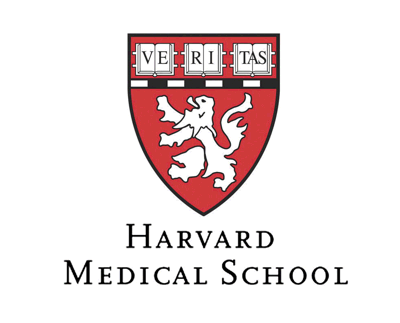Developing imaging tools to probe the living human brain for disease diagnostics and treatments
Our brain is an intricate network of neurochemicals, some of which communicate directly with each other while some others spectate until prompted to carry out a function. Imbalance in or dysfunction of these chemicals often triggers onset of mental illness, and therapeutics are designed to manipulate this brain—or neurochemical—activity. It is thus striking that we still have an incredibly limited understanding of how chemistry appears within the brain; we are developing drugs for something we know so little about! Dr. Jacob Hooker, Associate Professor of Radiology at Harvard Medical School, Associate Neuroscientist at Massachusetts General Hospital, and Director of Radiochemistry at the Martinos Center for Biomedical Imaging, develops imaging tools to non-invasively probe the living human brain at the molecular level during stimulation, at rest, and through drug manipulation. By creating novel techniques to enable data-rich, accessible imaging studies using positron emission tomography (PET) and magnetic resonance (MR), Dr. Hooker hopes to elucidate the molecules involved in healthy and diseased states of the brain and tissue.
Pioneers in visualizing neurochemistry, Dr. Jacob Hooker’s inherently translational and interdisciplinary team involves a diverse group of biologists, chemists, and imaging scientists as well as collaborators in the Martinos Center for Biomedical Imaging and other academic specialists around the world. In order to understand the pathways involved in the onset and progression of disease, it is crucial to be able to see inside the living human brain to study its earlier time points and monitor development of the disease as it relates to physical symptoms over the course of a lifetime. Tool developers partnering with clinical perspectives in neurology, psychiatry for both adults and children, oncology, neurodevelopment, and radiology therefore help observe how the brains in autism, neurodegenerative disease, mental illness, and chronic pain differ from the normal healthy state. The knowledge acquired from these novel imaging tools will ultimately offer invaluable insight into improving diagnostics and identifying better therapeutic targets.
Current research includes:
- Neuro-epigenetic Imaging: Environmental factors sometimes affect how a brain develops and functions, and based on this knowledge, Dr. Hooker and his team are developing the first tools that will allow them to understand the relationship between environment and genetics. This technology will especially impact studies in Alzheimer's, schizophrenia, Huntington’s disease, and many other brain disease areas as the project continues to grow.
- Platform Project: There are cells in the brain called glia, which are non-neural cells that for a long time were believed to be mere supporters of neurons but are now recognized as playing an important functional role within the brain. The glial cells react to stimuli that can be disease and undergo “reactive processes” to protect neurons, and glial biology that goes awry can unfortunately contribute to being a disease pathway and cause neuroinflammation. Dr. Hooker and his team thus look at glial activation using their imaging tools, studying Lou Gehrig's disease (ALS), Huntington’s disease, autism spectrum disorder, multiple sclerosis, and pain processes like fibromyalgia and chronic back pain as well as migraine.
- Chemical Connectivity: Using advanced imaging tools, Dr. Hooker and his team are trying to map the chemical connectome of the brain and understand how the brain function changes as one part of the neurochemical system changes. Based on these visuals, Dr. Hooker hopes to generate “rules” or theories for how neurochemicals interact with each other and modulate brain activity at the whole brain system level.
- New Radiotracer Development: Dr. Hooker and his team are developing the next generation of probes that will allow us to see new things occurring within the brain, whether they be neurochemical interactions or structural processes like myelination or neuroinflammation. Findings from these studies can yield crucial insights for developing novel therapeutics.

Bio
Dr. Jacob Hooker is an Associate Professor in Radiology at Harvard Medical School, Associate Neuroscientist at Massachusetts General Hospital, and Director of Radiochemistry at the Martinos Center for Biomedical Imaging. He holds affiliate appointments at the Broad Institute and the Dana Farber Cancer Institute. Dr. Hooker grew up in Asheville, North Carolina, received his undergraduate degrees at North Carolina State University, and then completed his Ph.D. in chemistry at University of California, Berkeley under the direction of Professor Matt Francis. In 2007, he was named Goldhaber Distinguished Fellow at Brookhaven National Laboratory and worked with National Medal of Science recipient, Dr. Joanna Fowler, to develop new imaging methods for neuroscience. In 2009, Dr. Hooker moved to Boston to begin his independent career at Harvard. That same year he was awarded the Presidential Early Career Award for Scientists and Engineers by President Obama. The citation from the President noted his strong scientific record and his unique commitment to science mentorship. He has since been recognized by several additional national awards. Dr. Hooker currently serves as an Associate Editor for ACS Chemical Neuroscience, and is a core faculty member for the MIT M+Vision Consortium and the Harvard Chemical Biology Ph.D. program.
Dr. Hooker remembers reading the line, “…our brain is a crowded chemistry lab, bustling with nonstop neural conversations,” in the book An Alchemy of Mind as a chemistry graduate student. As a young organic chemist with not much neuroscience background, he was drawn to the chemical simplification of how the brain functions. Little did he know at the time we have but a set of fleeting ideas about the language of neural conversation, and it turns out, neurochemical conversations are like a tightly woven social network, where each node influences the others. While we have some sense of how neurochemicals communicate in cell culture, we have very little understanding of the dynamic relationship between neurochemicals in the living human brain at rest, during stimulation, or through drug manipulation. The complex network of neural conversations can only be unraveled once we determine which neurochemicals can speak to one another and establish a ‘Rosetta stone’ for decoding the language(s) of neurochemistry.
Growing up and to this date, Dr. Hooker’s life has been shaped by bipolar disorder and other mental illnesses in his family. Over the decades while he trained and received a Ph.D. in chemistry, Dr. Hooker was drawn to neuroimaging where he could apply his knowledge in chemistry to understanding mental illness and work toward development of better treatments. As a basic scientist, Dr. Hooker craves the elucidation of a molecular basis for mental illness and believes that discovery is possible only by modeling chemical interplay in the brain.
After training at Brookhaven National Lab with Dr. Joanna Fowler, inventor of FDG PET imaging and chemist turned neuroscientist like himself, Dr. Hooker moved to Massachusetts General Hospital and Harvard Medical School. Since this transition over six years ago, his lab has focused on tool development that will probe chemical ‘connectivity’ of the human brain. Dr. Hooker and his lab work at all levels of research from basic and fundamental to applied, approaching mental illness and neurological disease from symptoms to chemical systems ‘backward’ and moving genetics and epigenetics ‘forward’. Dr. Hooker’s research group is diverse and has all of the critical expertise in chemistry, biology, neuroscience, physics and applied mathematics required to make an impact on diagnosing and treating brain disease.
Outside of research, Dr. Hooker loves to spend time with his amazing wife and young daughter and every once in awhile brews beer. Although time no longer allows him to as much, he used to participate in Ironman triathlons and still enjoys keeping in shape.
For more information, visit hookerlab.martinos.org
In the News
Publications
Videos
Awards
Inventor of the Year, 2008
Battelle
Young Alumnus of the Year, 2009
North Carolina State University
Outstanding Mentor Award, 2010
Department of Energy
Presidential Early Career Award for Scientists and Engineers (PECASE), 2010
President Obama
Talented 12 Award C&E News, 2015
American Chemical Society
Scientists to Watch, 2015
The Scientist Magazine
NARSAD Investigator Award, 2015
Brain & Behavior Research Foundation


